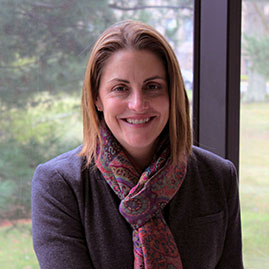About GFDL
Leaders in Climate Model Development and Research
GFDL is focused on comprehensive long-lead-time research that is fundamental to advancing the scientific understanding of the physical, dynamical, chemical and biogeochemical processes governing the behavior of the atmosphere, oceans, land, and ice components and their interactions with the ecosystem. Scientists at GFDL develop and use Earth system models and computer simulations to improve our understanding and prediction of all aspects of the climate system. GFDL scientists focus on model-building relevant for society, for hurricane research, weather and ocean prediction, seasonal forecasting, understanding regional and global climate change, and more. GFDL has pioneered much of the world’s research on the modeling of climate change since 1955.
GFDL’s research encompasses the predictability and sensitivity of global and regional climate; the structure, variability, dynamics and interaction of the atmosphere, the ocean, sea ice, and land; and the ways that the atmosphere, oceans, and land influence, and are influenced by various trace constituents. This science incorporates a variety of disciplines including meteorology, oceanography, hydrology, classical physics, fluid dynamics, chemistry, applied mathematics, and numerical analysis.
Research at GFDL is facilitated by the Atmospheric and Oceanic Sciences Program, which is a collaborative program with Princeton University. Under this program, Princeton faculty, research scientists, and graduate students participate in theoretical, analytical, numerical, and observational studies. The program is supported in part by NOAA funding.
Leadership
Advancing Understanding of Weather and Climate
GFDL’s state-of-the-art coupled global Earth system models provide a suite of societally relevant information and decision support products from weather to climate time scales, and on geographic scales, from local to global.
The dynamical core (FV3), which is the basis of all of GFDLs climate models, is the basis of the National Weather Service’s Next Generation Global Prediction System which became operational in 2019. Many other climate modeling labs around the world use FV3 as the dynamical core that drives their climate models. It has proven capable of accurately predicting individual hurricanes as well as hurricane seasons, and is capable even of forecasting individual severe storms, such as those that spawn tornadoes. FV3 is helping to unify regional and global models for both weather and climate applications.
Over the past few decades, many GFDL models and modules have been transitioned for operational use, such as the GFDL hurricane forecast model which was used for operational hurricane forecasts by the National Weather Service and the U.S. Navy for two decades. GFDL’s global dust algorithm is used in operational dust forecasting; and the lab’s ocean model (MOM6) is used in the National Weather Service’s Next Generation Global Prediction System, and is being implemented for operational ocean predictions by the U.S. Navy and the government of Australia. GFDL contributes to the National Weather Service’s experimental seasonal forecasting (NMME), and the lab provides real-time experimental seasonal forecasts of regional Atlantic hurricane activity. GFDL model results are used extensively by NOAA Fisheries and Ocean Service partners to translate Earth system variability into vulnerability and impact assessments.
GFDL’s research plays an invaluable role in the weather and climate science community in public, academic, and private sectors. The lab’s climate and Earth system models, process modules, and model output are publicly available through GFDL’s Data Portal. GFDL participates in the Program for Climate Model Diagnosis and Inter-comparison, which organizes and serves model output for the World Climate Research Program and the Intergovernmental Panel on Climate Change. In addition, the lab’s ocean model will also be used in the next generation of the National Center for Atmospheric Research Community Earth System Model.
The GFDL mission is to be a world leader in the development of comprehensive, integrated and unified models of the Earth system comprising the atmosphere, oceans, land, biosphere, cryosphere, and ecosystems; and application of these models for the seamless understanding, predictions and projections of the Earth system, from hours to decades and from global-to-regional spatial scales, accounting for natural variations and forced changes.





